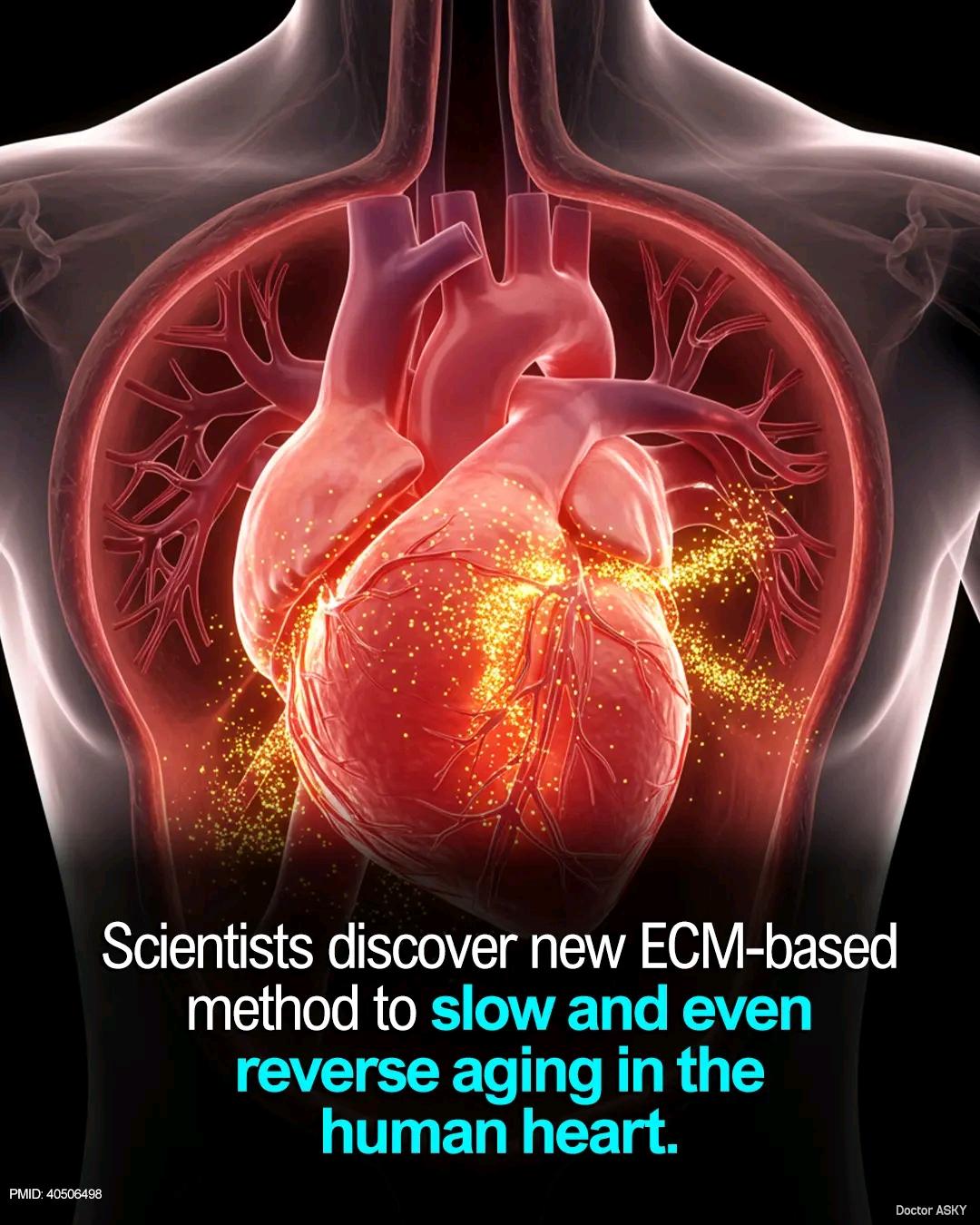A fascinating study suggests we might one day be able to slow or even reverse the aging of the heart — not by targeting the heart cells themselves, but by focusing on something surrounding them. Researchers have zeroed in on the extracellular matrix (ECM), the scaffolding that supports and connects cells, as a key player in how the heart ages. As we get older, the ECM becomes stiffer and less flexible, which can contribute to reduced heart function.
To explore how ECM changes affect heart aging, scientists developed a unique model using a mix of real rat heart tissue and a custom lab-made gel called DECIPHER. This allowed them to simulate different combinations of tissue stiffness and cell signaling — for example, pairing young heart cells with stiff, old ECM, or aging cells with young, flexible ECM. Surprisingly, they found that the chemical signals in younger heart cells could actually overcome the negative effects of aging tissue, while older cell signals led to dysfunction even in a flexible environment.
This means that improving the cellular environment around heart cells — rather than just targeting the cells themselves — might be key to protecting heart health as we age. While human trials are still a long way off, the findings open the door to innovative therapies that might one day restore heart function in aging populations.
PMID: 40506498
To explore how ECM changes affect heart aging, scientists developed a unique model using a mix of real rat heart tissue and a custom lab-made gel called DECIPHER. This allowed them to simulate different combinations of tissue stiffness and cell signaling — for example, pairing young heart cells with stiff, old ECM, or aging cells with young, flexible ECM. Surprisingly, they found that the chemical signals in younger heart cells could actually overcome the negative effects of aging tissue, while older cell signals led to dysfunction even in a flexible environment.
This means that improving the cellular environment around heart cells — rather than just targeting the cells themselves — might be key to protecting heart health as we age. While human trials are still a long way off, the findings open the door to innovative therapies that might one day restore heart function in aging populations.
PMID: 40506498
A fascinating study suggests we might one day be able to slow or even reverse the aging of the heart — not by targeting the heart cells themselves, but by focusing on something surrounding them. Researchers have zeroed in on the extracellular matrix (ECM), the scaffolding that supports and connects cells, as a key player in how the heart ages. As we get older, the ECM becomes stiffer and less flexible, which can contribute to reduced heart function.
To explore how ECM changes affect heart aging, scientists developed a unique model using a mix of real rat heart tissue and a custom lab-made gel called DECIPHER. This allowed them to simulate different combinations of tissue stiffness and cell signaling — for example, pairing young heart cells with stiff, old ECM, or aging cells with young, flexible ECM. Surprisingly, they found that the chemical signals in younger heart cells could actually overcome the negative effects of aging tissue, while older cell signals led to dysfunction even in a flexible environment.
This means that improving the cellular environment around heart cells — rather than just targeting the cells themselves — might be key to protecting heart health as we age. While human trials are still a long way off, the findings open the door to innovative therapies that might one day restore heart function in aging populations.
PMID: 40506498
0 التعليقات
0 المشاركات
101 مشاهدة



